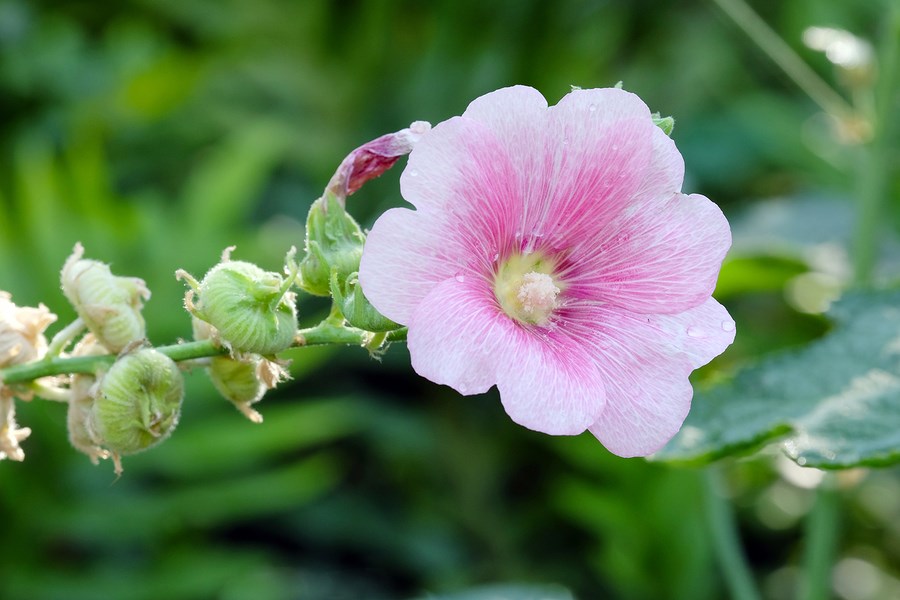There is a beautiful stately plant I rarely see in gardens these days, which is a shame. This tall plant, growing up to eight feet without support, was often grown along a wall or fence. It is also available with double flowers, and as an annual, a biennial or a short-lived perennial. I now have the short-lived perennial where an individual plant lives three to four years for me. The flowers are four to five inches across blooming up the stem in shades of pink, red, yellow, and almost black.
You are not likely to find the common garden hollyhock, Alcea rosea, as a bedding plant, but it is easily grown from seed. Only the single-flowered hollyhock is hardy for us, in both the biennial and perennial form. There are annual hollyhocks that have double flowers that can be grown from seed.
To grow annual hollyhocks from seed you would need to start them by April first to have blooms in August. The seeds and transplants require cool conditions, which can be difficult to provide indoors. If you want to give them a try, make sure the seed packet has good information or search online. The doubles are shorter plants.
Biennial and perennial hollyhocks only require a patch of garden and patience to grow from seed. These seeds need a winter to break dormancy.
Plant the seeds in the fall in an area that will not be disturbed. In the spring, rosettes of slightly fuzzy heart-shaped leaves will appear. When the plants are large enough you can carefully dig them up and move them to their final location. Be patient, they will not bloom until the following summer.
After that initial year you will have blooms every summer if you allow them to self-sow or if you collect
seeds and sow them in
the fall.
Hollyhocks only require ordinary soil in full sun. Water regularly and deeply, about once a week if rainfall is insufficient. Mature plants can tolerate a dry spell. Top dress in spring with compost or aged manure.
Hollyhocks are susceptible to a rust fungus, but I have not seen any. It could be that there are not enough of them in the area for a rust to spread. Mine have been disease- and pest-free so far.
If you want to give the single hollyhocks a try you may have to order seed from a catalogue. I have a few seeds to spare collected from my own plants, and can collect more this summer. Remember, you seed them outdoors in the fall.




